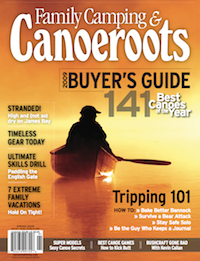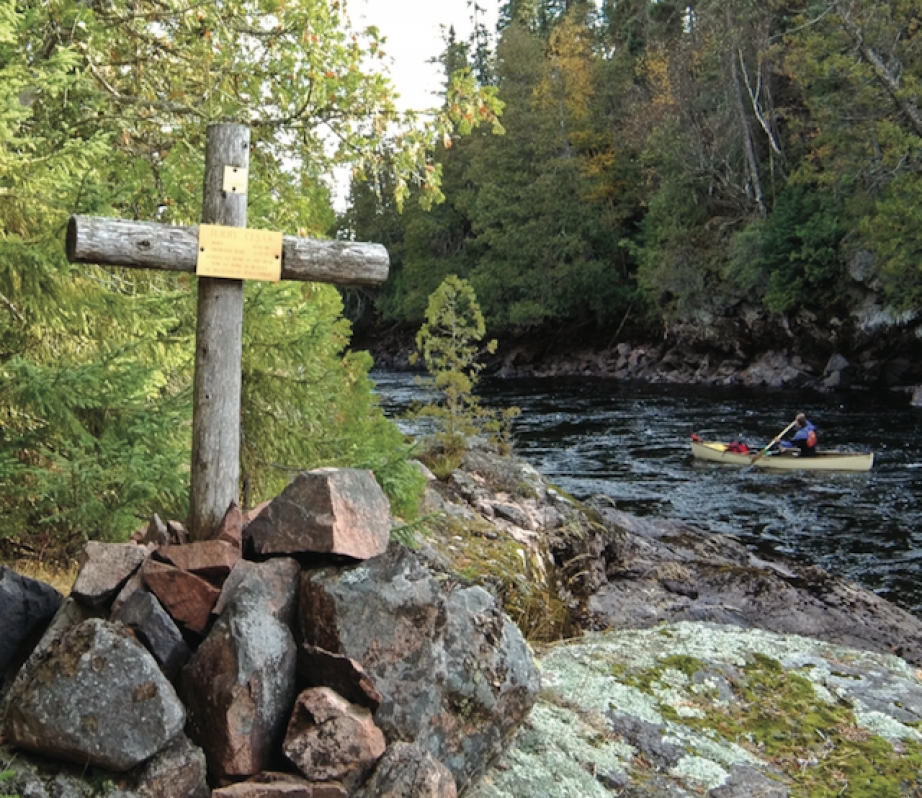In this issue’s Tumblehome column, our resident sage James Raffan enthuses that the active chatter on Internet forums allows far-flung canoeists to connect with each other.
Of course, they don’t always agree. Last fall the Canadian Canoe Routes forum debated the removal of the bronze cross on Algonquin Park’s Petawawa River that commemorated Blair Fraser’s 1968 drowning.
The anonymous vandal apparently thought he was defending wilderness by taking a hack saw to a three-foot cross in a park that is 78 per cent tree farm.
True, not everyone who has slept in a tent needs to be immortalized in the wilderness after death, but Blair Fraser wasn’t just any paddler.
Fraser, Eric Morse, Sigurd Olson and a half-dozen others made up the latter-day Voyageurs, a group of prominent Canadians and Americans who, in the 1950s and ‘60s, retraced the fur trade routes of the real voyageurs.
This would be commonplace now, which is just the point. Back then it was a new idea to embark on gruelling wilderness canoe trips for recreation. They became media darlings. The Toronto Star even chartered a plane to intercept them on the Churchill River.
“The media’s interest could scarcely have been greater had the Archbishop of Canterbury been discovered making a northern canoe trip with the Pope,” remarked Morse in Freshwater Saga.
Though the Voyageurs were just out for a good time, the timing was such that they spearheaded a growing appreciation for the cultural history of a nation that had, at its core, a landscape explored, settled and still best-travelled by canoe.
Without the kick start Fraser’s Voyageurs gave to conservation, paddlers would have had a harder time convincing the rest of the country that wild waters are central to our history, our future, and worth preserving. This fight continues. The cross in the photo above isn’t Fraser’s cross, it’s for a paddler who drowned on Lake Superior’s White River. But it might soon also be commemorating the waterfall just downstream. It is the second of three hydro sites proposed for the White, the first site was finished last fall.
Fraser’s continuing relevance can also be read into Amy Stuart’s report on what Canada’s high urbanization and immigration rates mean for canoeing. Fewer and fewer Canadians are growing up with a family tradition of canoeing. Will canoeing be marginalized by changing demographics?
If the answer is no, it’s because of something Fraser identified 40 years ago. In The Search for Identity (a book of political history, not new-age introspection) he wrote of the Canada he knew. “This land is still empty. …its portages still well marked, its lakes and streams still clean. Most Canadians have never seen this wilderness and never will. It is too far away. But it is typical of something that is within the easy reach of every Canadian, urban or rustic—an empty area of forest or plain in which a man can still en- joy the illusion of solitude. This is the quality that makes Canada unique and gives root to Canadian patriotism.”
An idea—and a paddler—worth remembering.

This article first appeared in the Spring 2009 issue of Canoeroots Magazine.



